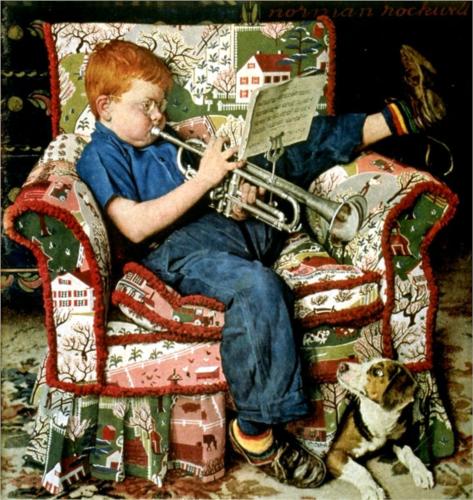Monday, November 14, 2016
Setting Goals And Achieving Objectives -- Practice Tips For The Modern Musician
by By Eric Rath
 Too often, we as music educators, default to statements like, "go home and practice" or "you can't practice your horn if it doesn't go home." These are not bad statements themselves, but they promote the need to practice without giving our students something concrete to work on. As much as we'd like our students to instinctively know what they need to improve on, we need to understand that our students don't see their musical deficiencies to the degree that we do.
Too often, we as music educators, default to statements like, "go home and practice" or "you can't practice your horn if it doesn't go home." These are not bad statements themselves, but they promote the need to practice without giving our students something concrete to work on. As much as we'd like our students to instinctively know what they need to improve on, we need to understand that our students don't see their musical deficiencies to the degree that we do.
While it can be a challenge to specify items to practice for every age of student, it can be especially difficult with beginner students. The good news is that these students are often the most excited and motivated and are already hanging on our every words. So, when we can give them specific things to practice, they are very likely to do it. This will foster a set of good practice habits that these students will take with them as they get older.
Normally, our instructions to our students sound like this: "Practice line #81 tonight." With specificity, those instructions could sound more like this: "Try playing line #81 tonight three times in a row without any mistakes. Be sure you are using a metronome and don't forget to set your stopwatch so you'll know how long you practiced." This takes more time on the part of the director, but the return on investment should balance that out.
For junior high and middle school, tell your students to "practice like a band rehearsal." For my students, this means that they start by playing a few various long tone exercises, lip slurs for the brass, chromatics, register studies or harmonics for the woodwinds and scales to start each session. The percussion have an entire binder of technical exercises to work on. Next they can move to sight-reading (if they have a good source for that), or even some rhythm exercises. After that, they'll start working through particular passages in any concert, festival or contest music they are working on in class. Students in private lessons will also carve out time for items that their private teacher has assigned. I like to recommend that if it's possible, students play something fun at the end of each session. (Students need to know that there are tons of play-along resources out there that provide students an outlet for fun. And it tricks them into sight-reading -- often in some terrible keys!).
High school and junior high/middle school students can benefit tremendously by having Objective Sheets assigned to them. Now, this definitely takes more work on the part of the director, but the benefits in my own program have greatly out-weighed the cost. Each six weeks, we give students a sheet that consists of 10 different objectives. One or two may deal with materials (having enough playing reeds, valve oil, inventory of sticks and mallets, pencil, etc), but most are based around having a student play a certain exercise, scale or excerpt.
Students have to play for me or another director to earn our signature for each objective. We like to be fairly strict with signing off on these and don't mind asking a student to go work on it, then come back and try again. Our standard is "if we wouldn't give it a 1st Division at Solo & Ensemble Contest, we won't sign off on it." Objective Sheets in our program for grades 7-12 have replaced Practice Records. Simply put, if a student is passing off objectives, we know they're practicing. (6th grade beginners have a hybrid Practice Record that introduces some occasional objectives to help prepare them for junior high.)
When it comes to a student's individual practice time, they need to be focused on a specific set of instructions, work through them without distraction and set a stopwatch, instead of watching a timer slowly trickle down. To do this, we as directors have to buy into training our students to get to this point -- we can't assume it will happen spontaneously. As detailed, efficient, goal-oriented practice becomes more commonplace in your program, you'll also begin to see a cultural shift. This cultural shift can only mean, better performances given by better prepared students. And not only is your band better, but you've just taught your students a set of skills they can take with them into adulthood and practically apply in many other situations.
Eric Rath Eric Rath is an active educator, clinician, adjudicator, arranger, and composer. He has served as a band and orchestra director as well as a percussion specialist at the middle and high school levels. He and Ralph Hicks are the co-authors of the percussion ensemble collection, "Beyond Basic Percussion" and the snare drum and keyboard fundamentals book, "Five Minute Drill" (Tapspace Publications). Recently, they launched their latest book, "The Golden Age of Ragtime," which features five ragtime piano pieces transcribed for xylophone soloist and marimba ensemble or piano accompaniment. ericrathmusic.com |
Contact Your Local Palen Music Center Representative
Can we assist you with
anything? Please contact your local Palen Music Center school road
representative for all of your music education needs.
